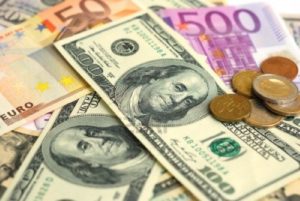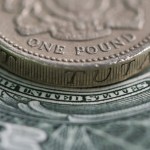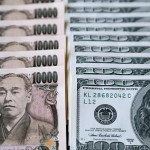 The euro slid to the weakest level in more than a month against the US dollar on Friday, capping a third straight week of losses, as European Central Bank President Mario Draghi suggested readiness to use Quantitative easing (QE) to boost inflation in the currency bloc.
The euro slid to the weakest level in more than a month against the US dollar on Friday, capping a third straight week of losses, as European Central Bank President Mario Draghi suggested readiness to use Quantitative easing (QE) to boost inflation in the currency bloc.
EUR/USD touched a session low at 1.3673 at 14:30 GMT, the weakest since February 27, after which the pair settled at 1.3703 on Friday, capping a 0.36% loss, a third straight weekly drop. Support was likely to be found at February 27th low, 1.3643, while resistance was to be met at April 3rd high, 1.3804.
The European Central Bank’s policy makers refrained from taking action on April 3 and kept the main refinancing rate at a record-low 0.25%, after which the President of the central bank Mario Draghi commented that officials “do not exclude further monetary policy easing.” Draghi said that the Governing Council of the ECB had discussed possible measures to fight against deflation and all the members were “unanimous” that the central bank should explore new policy avenues.
Draghi gave his strongest signal so far that the ECB is ready and may use a policy that is mainly associated with large-scale government bond purchases, known as Quantitative easing. However, the central bank may have to design its own approach to QE, different from the one implemented by the US Federal Reserve, because of the specificity of the euro area’s economy.
“Given ECB President Draghi’s more dovish remarks it appears that the probability of additional monetary policy action has been rising,” Manuel Oliveri, a foreign-exchange strategist at Credit Agricole Corporate & Investment Bank, wrote in an e-mailed note to clients on Friday, cited by Bloomberg. “We remain of the view that being long the EUR from the current levels offers little risk reward.”
The ECB President is struggling to convince investors that the central bank is ready to do whatever it takes to prevent a Japan-style deflationary spiral. At the same time, there are a number of political and economic obstacles to a wide wave of sovereign-asset purchases, which probably makes a program aimed at increasing bank lending more appropriate. Boosting bank lending is a way to improve credit conditions for small-and-medium sized entities, which are the backbone of the euro region economy.
Meanwhile, demand for the greenback was pressured on Friday, after payrolls data came below market expectations.
Employers in all sectors of the US economy, excluding the farming industry, added 192 000 new jobs in March, after a revised 197 000 gain in the precious month that was higher than previously reported. The median experts’ forecast called for 200 000 new payrolls to be added last month. Jobs creation is considered of utmost importance for consumer spending, which accounts for almost 70% of the US economy.
In 2013, the US added 194 000 payrolls each month on average, while in 2012 the jobs created were 186 000.
Fed President for St. Louis James Bullard said on April 2 that if inflation slows further, decreasing the pace of Fed tapering cannot be ruled out, even though he didn’t expect that to happen.
However, Federal Reserve Chair Janet Yellen said on March 31 that the central bank needed to do more to fight against unemployment, because keeping interest rates near zero for more than five years and swelling its balance sheet with asset purchases seemed not to be enough. She also added that the US economy still needed monetary stimulus for “some time” and that most of the Fed officials shared the same opinion.
“The Fed is continuing to taper and there’s a relatively high hurdle for any deviation from that,” Eric Viloria, a currency strategist at Wells Fargo & Co. in New York, said in a Bloomberg phone interview on Friday.
The dollar rallied last month after Federal Reserve Chair Janet Yellen said the central bank’s bond-buying program may be brought to an end this fall, with borrowing costs starting to rise by mid-2015. The Federal Reserve trimmed its monthly bond-buying program by $10 billion at the last three meetings.
EUR/USD may be influenced by a number of reports/events, that are scheduled during the upcoming week as follows:
On Monday (April 7th), Germany, the largest euro area economy will release a report on its industrial output for February.
At 15:45 GMT the Fed President for St. Louis is scheduled to make a statement.
On Tuesday (April 8th), Fed President for Minneapolis Narayana Kocherlakota and Fed President for Philadelphia Charles Plosser are expected to make separate statements.
On Wednesday (April 9th), the largest euro zone economy, Germany, will release data on its trade balance in February.
At 18:00 GMT, the Federal Open Market Committee will release minutes from its March policy meeting.
On Thursday (April 10th), the ECB will release its monthly bulletin, concerning the current economic outlook of the 18-nation common currency area, while the US will report its Federal budget balance for last month.
On Friday (April 11th), Germany will publish the final reading of its consumer price index for March, while the US will publish its producer price and core producer price indexes.




